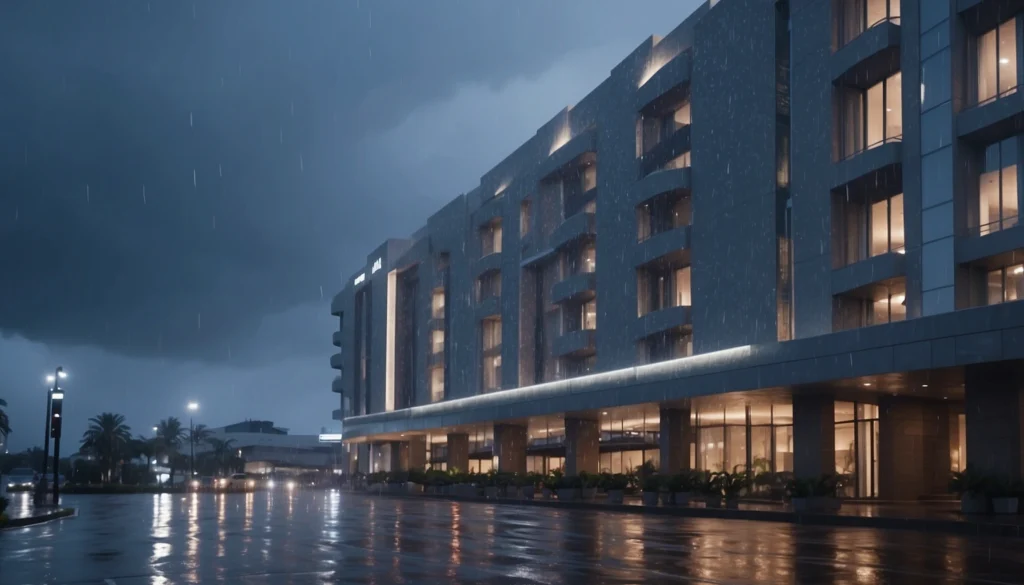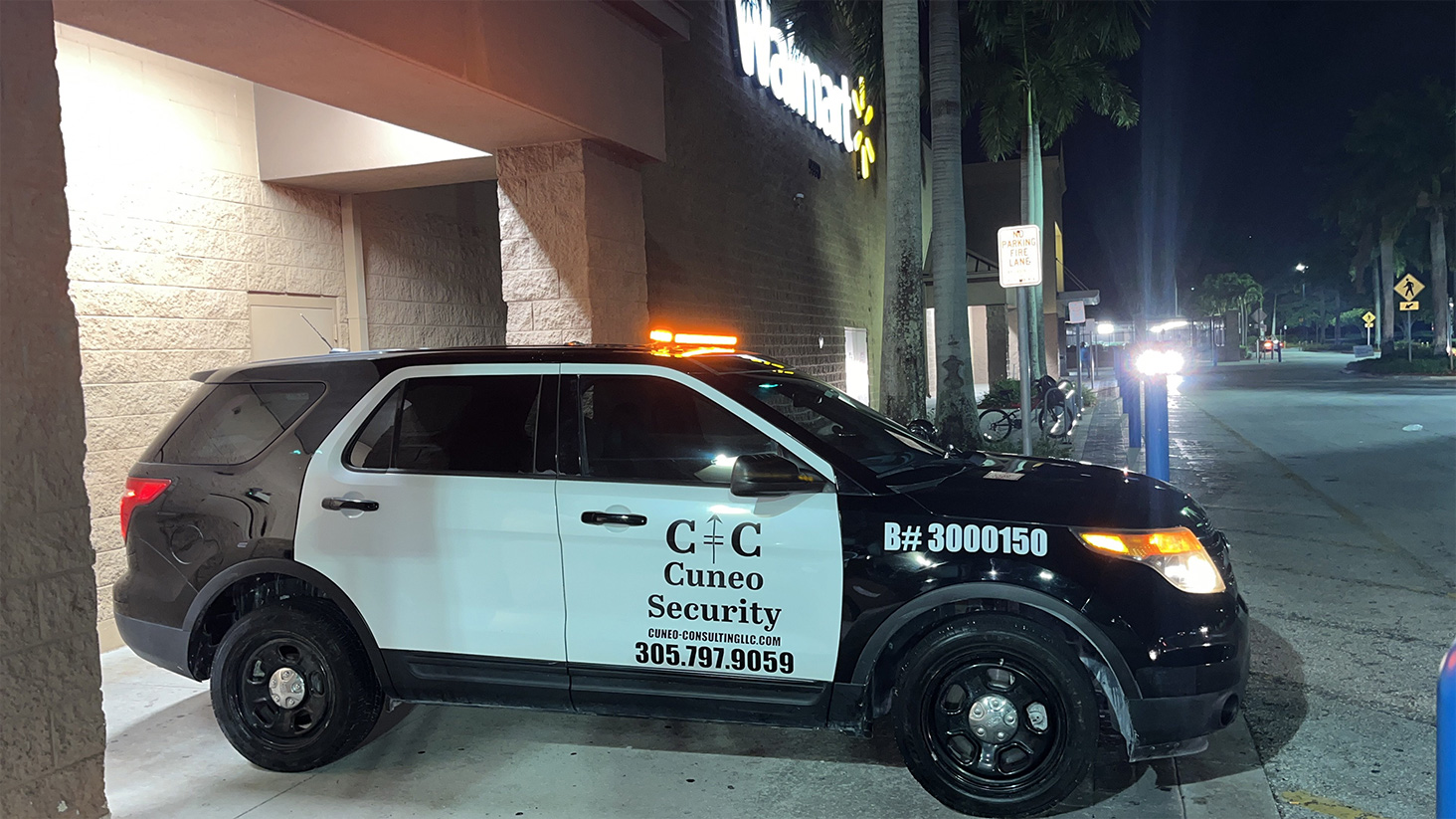Introduction
The importance of securing critical infrastructure against storm-related threats
Physical security measures play a crucial role in safeguarding critical infrastructure during storms. While much attention is often given to digital security, the physical security of facilities is equally important, particularly in the face of natural disasters. Storms can cause catastrophic damage, disrupting services, endangering lives, and leading to substantial economic losses. The ability to withstand and quickly recover from such events depends largely on the robustness of the physical security measures in place.
This article explores the role of physical security in protecting critical infrastructure from storm-related threats. By examining the vulnerabilities that storms expose, the security measures that can mitigate these risks, and real-world examples of successful implementations, this piece aims to provide a comprehensive guide for facility managers, security professionals, and policymakers. Ensuring that critical infrastructure remains operational during and after a storm is not just about resilience; it’s about safeguarding the lifeblood of communities. The following sections will delve deeper into the specific challenges and solutions that define effective storm-related physical security.
Table of Contents:
The Role of Physical Security in Protecting Critical Infrastructure During Storms
1. Introduction
1.1 The Importance of Securing Critical Infrastructure Against Storm-Related Threats
1.2 Table of Contents: The Role of Physical Security in Protecting Critical Infrastructure During Storms
2. Understanding Critical Infrastructure
2.1 Types of Critical Infrastructure
2.2 Vulnerabilities to Storms
3. The Impact of Storms on Critical Infrastructure
3.1 Historical Examples
3.2 Consequences of Infrastructure Failure
3.3 Risk Assessment
4. The Role of Physical Security in Storm Preparedness
4.1 Pre-Storm Risk Mitigation
4.2 Security System Fortification
4.3 Access Control During Storms
5. Key Physical Security Measures for Storm Protection
5.1 Reinforcement of Physical Structures
5.2 Flood Prevention and Water Management
5.3 Backup Power and Communication Systems
5.4 Emergency Response Coordination
6. Case Studies: Successful Implementation of Storm Security Measures
6.1 Case Study 1: Hurricane Harvey and the Texas Medical Center
6.2 Case Study 2: Super Typhoon Haiyan and the Philippines’ Tacloban Airport
6.3 Lessons Learned
7. Challenges in Implementing Storm-Related Physical Security
7.1 Budget Constraints
7.2 Technological Limitations
7.3 Coordination with Multiple Stakeholders
8. The Future of Physical Security in Storm Preparedness
8.1 Innovations in Storm-Resilient Infrastructure
8.2 The Role of AI and Automation
8.3 Importance of Continuous Improvement
9. Conclusion
10. References

Understanding Critical Infrastructure
Critical infrastructure encompasses the physical and organizational structures and facilities that are essential for the functioning of a society and economy. These include power generation and distribution networks, water supply and treatment plants, transportation systems, communication networks, and emergency services facilities. Each of these components is interconnected, and a failure in one area can have cascading effects on others, leading to widespread disruption.
For example, power stations are a cornerstone of critical infrastructure, supplying electricity that powers homes, businesses, and essential services like hospitals. Water treatment plants ensure that communities have access to safe drinking water, and transportation systems facilitate the movement of goods and people. Communication networks, meanwhile, provide the backbone for information exchange, including emergency response coordination.
The importance of critical infrastructure cannot be overstated. These systems are vital for maintaining public health, safety, and economic stability. Any disruption, particularly during a storm, can have severe consequences, from prolonged power outages and water contamination to hampered emergency response efforts. In the aftermath of a storm, restoring these services is often the top priority for governments and emergency responders.
Critical infrastructure is particularly vulnerable to storms due to its often widespread and exposed nature. For instance, power lines are susceptible to wind damage, while floodwaters can overwhelm water treatment facilities and transportation networks. Communication towers, often located in remote or elevated areas, can be toppled by strong winds or lightning strikes. Understanding these vulnerabilities is the first step in implementing effective physical security measures to protect these essential systems during storm events.
The Impact of Storms on Critical Infrastructure
Storms have the potential to cause widespread and devastating impacts on critical infrastructure, disrupting essential services and putting lives at risk. Historical examples highlight the severity of these impacts and underscore the need for robust protective measures.
One of the most notable examples is Hurricane Katrina, which struck the Gulf Coast of the United States in 2005. The storm caused catastrophic damage to the region’s critical infrastructure, particularly in New Orleans. The failure of levees led to extensive flooding, which overwhelmed the city’s water treatment facilities and contaminated the water supply. Power outages affected millions, with some areas left without electricity for weeks. The disruption of transportation networks and communication systems further complicated emergency response efforts, leading to a humanitarian crisis of unprecedented proportions .
Similarly, Superstorm Sandy, which hit the northeastern United States in 2012, demonstrated how even well-prepared regions can suffer significant infrastructure damage. Flooding from the storm surge inundated subway systems, tunnels, and roads in New York City, crippling transportation for days. The power grid was severely impacted, with some areas experiencing prolonged outages. The storm also exposed vulnerabilities in fuel distribution systems, leading to shortages that hampered recovery efforts .
The consequences of infrastructure failure during storms are far-reaching. Prolonged power outages can disrupt everything from hospital operations to food supply chains, while water contamination can lead to public health crises. Transportation disruptions can delay emergency response, preventing timely aid from reaching those in need. Communication failures can isolate communities, making it difficult to coordinate rescue and recovery efforts.
To mitigate these risks, a thorough risk assessment is essential. This involves identifying the specific vulnerabilities of different types of critical infrastructure to storm-related threats. For instance, power stations located in flood-prone areas may require elevated structures or flood barriers, while communication towers in hurricane-prone regions might need reinforced bases or wind-resistant designs. By understanding these vulnerabilities, stakeholders can implement targeted physical security measures to protect critical infrastructure from the devastating impacts of storms.
The Role of Physical Security in Storm Preparedness
Physical security is a critical component of storm preparedness for protecting critical infrastructure. While much of the focus in disaster planning often centers on operational continuity and emergency response, the physical security measures implemented before, during, and after a storm are crucial in minimizing damage and ensuring rapid recovery.

One of the most effective ways to protect critical infrastructure from storm-related damage is through proactive risk mitigation. This includes securing the physical premises by reinforcing structures and safeguarding vulnerable areas. For example, installing storm shutters, reinforcing windows, and securing loose objects can prevent wind and debris from causing damage. Additionally, facilities located in flood-prone areas may benefit from elevating essential equipment above potential flood levels or constructing flood barriers around the site.
Physical security systems, such as surveillance cameras, access control points, and perimeter fencing, play a vital role in protecting critical infrastructure during storms. However, these systems themselves can be vulnerable to storm damage. Fortifying these security measures is essential to ensure they remain operational throughout the storm. For instance, surveillance cameras should be equipped with protective housings that shield them from wind and water damage, and access control systems should have backup power supplies to function during power outages. Perimeter fencing and barriers should also be reinforced to withstand high winds and prevent unauthorized access during the chaos of a storm.
Maintaining controlled access to critical infrastructure sites during a storm is essential for both security and safety reasons. Unauthorized access can lead to theft, vandalism, or accidental damage, which can further complicate recovery efforts. Implementing strict access control measures, such as requiring identification and authorization for entry, can help ensure that only essential personnel are present on-site. Additionally, having a clear evacuation plan and designated safe areas for staff can prevent injury and loss of life.
These physical security measures are not just about protecting infrastructure but also about preserving the continuity of services that are critical to the community’s well-being. A well-fortified security system can significantly reduce the impact of a storm on critical infrastructure, enabling quicker recovery and resumption of services.

Key Physical Security Measures for Storm Protection
To protect critical infrastructure during storms, a variety of physical security measures must be implemented. These measures are designed to minimize damage, maintain operational integrity, and ensure the safety of personnel and the surrounding community.
Reinforcement of Physical Structures
The foundation of any storm preparedness plan is the reinforcement of physical structures. This involves fortifying buildings and facilities to withstand the forces of nature, particularly high winds and flying debris. For example, using impact-resistant materials such as reinforced concrete or steel can help protect critical infrastructure from wind damage. Roofs should be securely anchored to withstand uplift forces, and windows and doors should be equipped with storm shutters or reinforced glass to prevent breakage. Additionally, securing or removing exterior objects like signage, light poles, and loose equipment can reduce the risk of these items becoming dangerous projectiles during a storm.
Flood Prevention and Water Management
Flooding is one of the most common and destructive consequences of storms, especially in low-lying areas or regions prone to heavy rainfall. Effective flood prevention and water management strategies are essential for protecting critical infrastructure. This may include installing flood barriers, such as sandbags, levees, or temporary flood walls, around vulnerable facilities. In areas where flooding is a recurring issue, more permanent solutions like raised foundations or water-resistant building materials may be necessary.
Proper drainage systems are also crucial in preventing water accumulation around critical infrastructure. Regular maintenance of gutters, drains, and stormwater systems can ensure that water is directed away from buildings and equipment. In addition, sump pumps with backup power sources can help remove water from areas prone to flooding, further protecting critical assets.
Backup Power and Communication Systems
During a storm, power outages are almost inevitable. To maintain operations and ensure safety, critical infrastructure must have reliable backup power sources. Generators should be installed and tested regularly to ensure they can provide power when the main grid fails. These generators should be protected from flooding and securely anchored to prevent movement during high winds. Additionally, fuel supplies for generators should be stored safely and in sufficient quantities to last through prolonged outages.
Communication systems are equally important for coordinating emergency response and maintaining contact with staff and external agencies. Redundant communication systems, such as satellite phones or two-way radios, can provide a reliable backup if primary communication networks fail. Ensuring that communication equipment is protected from water damage and has a backup power supply is crucial for maintaining contact during and after the storm.
Emergency Response Coordination
Physical security measures also play a critical role in emergency response coordination during storms. Security personnel should be trained to manage access control, monitor surveillance systems, and coordinate with local emergency services. Establishing clear communication protocols and roles ensures that all staff members know their responsibilities during a storm. Additionally, having a well-defined evacuation plan, including designated safe areas and routes, can protect personnel from harm and ensure a swift and organized response to any emergencies that arise.
Implementing these physical security measures can significantly enhance the resilience of critical infrastructure during storms, helping to protect essential services and maintain community safety.

Case Studies:
Successful Implementation of Storm Security Measures
Case Study 1: Hurricane Harvey and the Texas Medical Center
In 2017, Hurricane Harvey brought unprecedented rainfall and catastrophic flooding to Houston, Texas. The Texas Medical Center (TMC), the largest medical complex in the world, faced significant risk due to its location in a flood-prone area. However, the facility’s proactive physical security measures played a crucial role in minimizing damage and maintaining operations.
Prior to the storm, TMC had invested heavily in flood prevention infrastructure, including the installation of massive underground stormwater detention basins capable of holding millions of gallons of water. These basins were part of a broader $50 million investment in flood mitigation. Additionally, critical systems, such as generators and electrical equipment, were elevated above ground level to protect them from potential floodwaters. These measures, combined with reinforced building structures and comprehensive emergency planning, allowed TMC to remain operational throughout the storm, providing vital medical services during a time of crisis (The Guardian, 2017).
Case Study 2: Super Typhoon Haiyan and the Philippines’ Tacloban Airport
In 2013, Super Typhoon Haiyan, one of the strongest tropical cyclones ever recorded, devastated the central Philippines, including Tacloban Airport, a critical infrastructure hub. Despite the overwhelming force of the typhoon, preemptive physical security measures helped the airport recover more quickly than expected.
The airport had implemented several key storm protection strategies, including the construction of wind-resistant terminal buildings and the reinforcement of existing structures to withstand extreme weather. The runway was designed with an enhanced drainage system, preventing severe flooding that could have rendered the airport unusable for an extended period. While the airport sustained damage, these measures significantly reduced the overall impact, allowing for the rapid restoration of air traffic, which was critical for delivering emergency aid and supplies to the affected areas (International Civil Aviation Organization, 2014).
Lessons Learned
These case studies illustrate the importance of investing in robust physical security measures to protect critical infrastructure from storm-related threats. The success of the Texas Medical Center and Tacloban Airport in weathering these storms underscores the value of proactive planning, structural reinforcement, and strategic emergency response coordination. By learning from these examples, other facilities can implement similar strategies to enhance their resilience against future storms.
References:
- The Guardian. (2017). "Hurricane Harvey: How Houston's flood defenses failed." Retrieved from https://www.theguardian.com/environment/2017/sep/01/houston-flood-defenses-hurricane-harvey
- International Civil Aviation Organization. (2014). “Recovery of Tacloban Airport.” ICAO Journal, March 2014. Retrieved from https://www.icao.int/publications/journalsreports/2014/icao-journal-march-2014.pdf


Challenges in Implementing Storm-Related Physical Security
While the importance of physical security in protecting critical infrastructure from storms is undeniable, implementing these measures comes with its own set of challenges. Understanding and addressing these challenges is crucial for ensuring that security strategies are both effective and sustainable.
Budget Constraints
One of the most significant challenges is the financial cost associated with implementing comprehensive physical security measures. Reinforcing structures, installing flood barriers, and upgrading security systems require substantial investment, which can strain the budgets of both public and private entities. For many organizations, particularly smaller ones, securing adequate funding can be a major hurdle. In some cases, this leads to difficult decisions about prioritizing certain aspects of storm preparedness over others. According to a report by the National Institute of Building Sciences, every dollar spent on hazard mitigation saves an average of six dollars in future disaster costs, highlighting the long-term financial benefits of upfront investments in physical security (National Institute of Building Sciences, 2019).
Technological Limitations
Another challenge lies in the technological limitations that some facilities may face. Outdated infrastructure and legacy security systems may not be capable of withstanding the demands of modern storm protection strategies. For instance, older surveillance cameras or access control systems may fail during power outages, while outdated building materials may not provide sufficient protection against high winds or flooding. Upgrading these systems to meet current standards is often necessary but can be costly and logistically challenging.
Coordination with Multiple Stakeholders
Effective storm-related physical security requires coordination among various stakeholders, including facility managers, security personnel, emergency responders, and local government agencies. This coordination can be complex, especially in large or decentralized organizations. Ensuring that all parties are aligned in their goals and responsibilities requires clear communication, regular training, and well-defined protocols. Additionally, coordinating with external agencies, such as local law enforcement or emergency services, is essential for a cohesive response during and after a storm.
These challenges underscore the need for a strategic approach to implementing storm-related physical security measures. By addressing budget constraints, technological limitations, and coordination issues, organizations can better protect their critical infrastructure and ensure resilience in the face of increasingly severe storms.
References:
The Future of Physical Security in Storm Preparedness
As climate change continues to drive the frequency and intensity of storms, the future of physical security in storm preparedness will increasingly depend on innovation and adaptability. Emerging technologies and evolving strategies offer new opportunities to enhance the resilience of critical infrastructure against these growing threats.
Innovations in Storm-Resilient Infrastructure
The development of storm-resilient infrastructure is a key area of focus for the future. Advances in building materials, such as high-performance concrete and flexible steel, are providing more durable options for fortifying structures against extreme weather. Additionally, smart materials that can self-heal after minor damage or change properties in response to environmental conditions are being explored for their potential to reduce long-term maintenance costs and improve resilience. According to the American Society of Civil Engineers, these materials represent the next generation of storm-resistant infrastructure, offering both enhanced protection and sustainability (American Society of Civil Engineers, 2023).
The Role of AI and Automation
Importance of Continuous Improvement
References:
- American Society of Civil Engineers. (2023). "Innovations in Infrastructure: The Future of Storm-Resilient Design." Retrieved from https://www.asce.org/future-storm-resilient-design
- NOAA's Hurricane Preparedness Videos: These videos offer detailed guidance on various aspects of storm preparedness, including understanding risks, preparing before hurricane season, and actions to take during and after storms. You can access these videos directly through NOAA's website: NOAA Hurricane Prep Videos (NOAA).
- National Weather Service Education Videos: The NWS also offers a collection of educational videos covering topics such as storm safety tips, weather preparedness, and more. These resources are available on the NWS website: NWS Education Videos (Weather.gov).
- National Hurricane Center YouTube Channel: For a more visual approach, the NWS's National Hurricane Center YouTube channel provides a variety of videos focused on hurricane preparedness and related topics. You can visit their channel here: NWS National Hurricane Center YouTube (youtube).

Conclusion
The increasing severity of storms presents a significant challenge to the protection of critical infrastructure. As highlighted in this article, the role of physical security in storm preparedness cannot be overstated. From reinforcing structures and implementing flood prevention measures to leveraging cutting-edge technologies like AI and automation, there are numerous strategies that organizations can employ to safeguard their essential facilities.
The case studies of the Texas Medical Center during Hurricane Harvey and Tacloban Airport during Super Typhoon Haiyan demonstrate the effectiveness of proactive physical security measures. These examples underscore the importance of investing in robust infrastructure protection to minimize damage and ensure a swift recovery when storms strike.
However, challenges such as budget constraints, technological limitations, and the need for coordinated efforts among multiple stakeholders must be addressed to fully realize the potential of these security measures. Looking to the future, continued innovation and adaptability will be key to maintaining resilience against increasingly unpredictable and powerful storms.
As storm-related threats continue to evolve, so too must our approach to physical security. By prioritizing these measures and remaining committed to continuous improvement, organizations can protect their critical infrastructure, safeguard public safety, and ensure the continuity of essential services during and after severe weather events.
Be Storm-Ready: Protect Your Business Today

